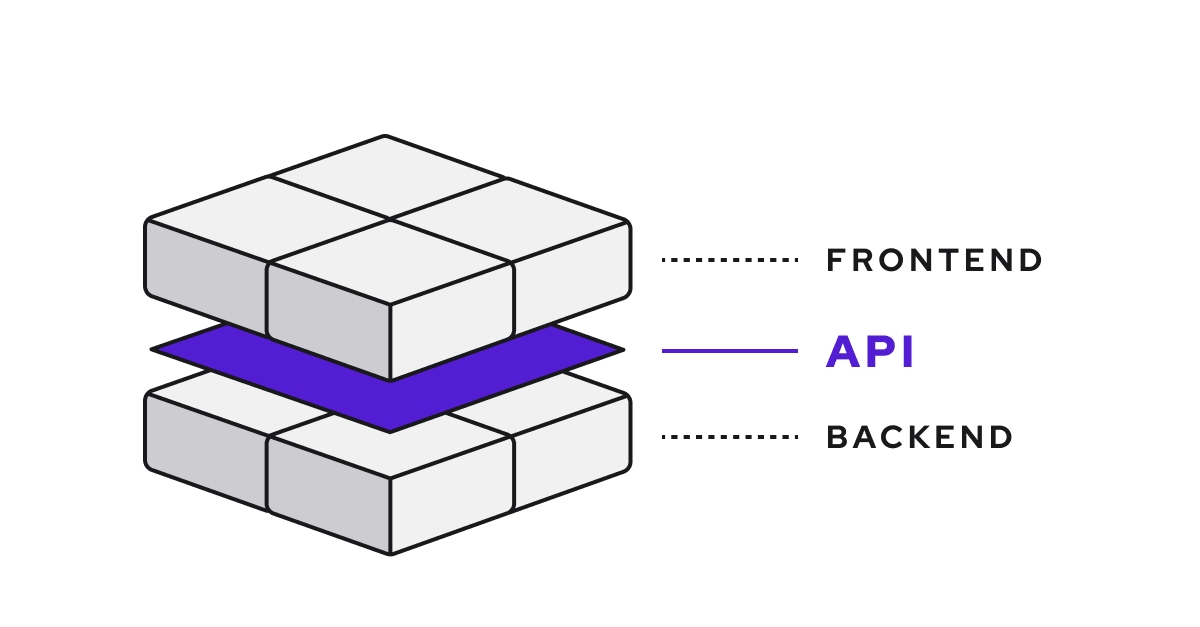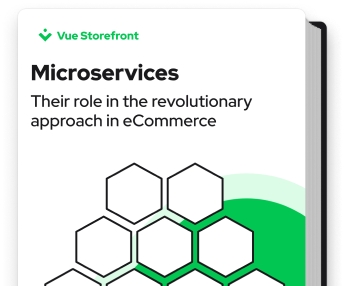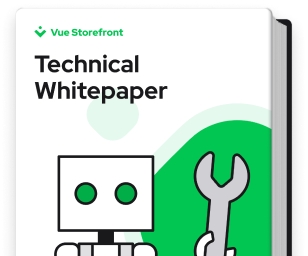Explore by Category:
Headless Commerce
What is Composable Architecture?
As with all new technologies that become an integral part of how you must equip and build your business, steep learning curves are inevitable. The same applies to composable commerce . For our focus here, this means answering questions like:
- What is composable architecture? Is it the same as TCA (The Composable Architecture)?
- Composable architecture vs Microservices. How do microservices fit into the picture?
- What are Packaged Business Capabilities (PBCs)?
In this blog post, you’ll learn the answers to these questions and why it is imperative for you to grasp the concept and importance of composable architecture. It explains the components and benefits of composable architecture and how you can leverage it in your own eCommerce business.
What is composable architecture?
Composable architecture is a design pattern that allows developers to create reusable components to build applications more quickly and easily. This pattern has been gaining popularity in recent years as businesses strive to reduce the time needed to develop and deploy new applications.
Why the sudden need to rethink how we do eCommerce?
“CIOs must find the IT force multipliers to enable growth and innovation and create scalable, resilient technical foundations whose scalability will free cash for digital investments. These imperatives form the three themes of this year’s trends: engineering trust, sculpting change, and accelerating growth.”
‘Every dark cloud has a silver lining’ is an adage that became especially relevant to eCommerce businesses when the COVID-19 pandemic hit our global shores. Since many people were confined indoors, they scrambled to find ways to live life as normally as they possibly could.
eCommerce retailers advanced in their digital transformation strategies were ready to meet this urgent need head-on. They delivered some solace and comfort as consumers could continue to buy their much-needed and favorite products fast and efficiently from the comfort of their homes (and phones!).
By May of 2020, the value of eCommerce transactions increased 77% YoY to $82.5 billion. That indicated an acceleration in year-over-year sales of what would have taken up to six years under normal circumstances.
Unfortunately, many eCommerce companies realized at that exact moment that their outdated legacy solutions did not meet the requirements to scale and cater to a sudden increase of almost 77% of retail going online and mobile in a matter of weeks.
Driven by modern API-First and SaaS trends, a composable architecture can help your business to build more robust and better performing digital experiences with less effort and faster than traditional stack architectures. Hence the massive migration to and scramble for the most efficient composable architecture solutions.
Okay, let’s move on to what composable architecture is in eCommerce.
Read more about Digital Transformation in eCommerce .
Composable architecture – definition
We base composable architecture on the idea of building software systems from small, independent components that you can combine to form a complete system. This modular approach to design makes it easy for developers to reuse code and components, saving time and money. In addition, composable architecture can make it easier to scale and maintain large applications.
Composable architecture consists of a set of modular components (microservices, headless applications, or PBCs) that can be easily assembled and configured to meet the specific needs of each business. Composable Architecture relating to commerce technology is a technical term that refers to an eCommerce stack that enables companies to better manage and customize their online stores.
This architecture provides businesses with a high degree of flexibility and scalability, making it an ideal solution for them. Composable Architecture is also highly extensible, allowing enterprises to effortlessly add new features and functionality as their needs evolve.
You can choose the best-of-breed technologies for your eCommerce stack with composable commerce. The software integrates via API, which allows it to communicate with other parts of the system seamlessly and without affecting existing functionality or increasing the burden on developers.
What is API?
In computing, an Application Programming Interface is a set of subroutine definitions, protocols, and tools for building composable software. Architecture like this minimizes dependencies between parts of the system by breaking them into small, independent modules. An API defines the interfaces between these modules, and sets forth the rules for how they interact.

- By adhering to well-defined APIs, modules can be swapped out or replaced with alternative implementations without affecting the rest of the system.
APIs play a vital role in enabling the flexibility and modularity that are characteristic of composable software architecture.
There is a great analogy in our trade to describe APIs by comparing them to a waiter in a restaurant:
"When you, the customer, order food, you don’t speak directly to the chef. Instead, you place your order with a waiter, who then takes your order to the kitchen and gives it to the chef, and when your food is ready, the waiter brings it back to your table."
You and the chef would be applications in this analogy, and the waiter is the API.
Learn more about API in headless commerce
Okay, back to composable architecture
The uniquely separated design approach behind this term means that different stakeholders will have access to only those pieces they need while still providing maximum flexibility when designing an online shopping experience.
If you enjoyed the restaurant analogy used to describe APIs, you could think of composable architecture as a deconstructed Big Mac. Instead of one hamburger on your plate that is simply too messy and arduous to separate when eating (monolithic architectures), you get each ingredient separated on your plate.
You can decide how to eat it. You can take one bite of each ingredient (microservices) at a time or grab a bite of your meat patty with a bit of relish (PBC) to get the taste you like most. Like eating your Big Mac in bites that YOU enjoy most, composable architectures are all about choice. It is a new method of aligning enterprises to a cloud-driven world.
“Cloud-native platforms will serve as the foundation for more than 95% of new digital initiatives by 2025 — up from less than 40% in 2021.”
Note from Alokai devs:
Composable architecture and The Composable Architecture (TCA) are not always the same when referenced in articles. TCA is designed for Swift, specifically for Apple app development (iOS). This article is about composable architecture as a design approach for entire eCommerce tech stacks - not TCA specifically
Composable architecture vs. microservices: It’s not one OR the other
Microservices are small independent services that work together to complete a more significant task within a composable commerce stack. Each microservice is responsible for a specific function, and they can be deployed and scaled independently of each other.
This allows eCommerce businesses to:
- Be more agile and respond more quickly to changes in the market.
- Microservices also make it easier to update eCommerce systems, as you can add new features without affecting the other services.
- Finally, microservices can improve fault tolerance, as the failure of one service will not take down the entire system.
What is a Packaged Business Capability (PBC)?
A Packaged Business Capability (PBC) in eCommerce is a set of eCommerce-related activities, products, and services (API-first microservices and headless commerce applications ) bundled together and offered as a complete eCommerce solution.
Alokai forms part of various eCommerce PBCs with platforms like Elastic Path , BigCommerce , Magento and commercetools .
You can integrate two microservices or headless applications to deliver one complete task. Or it can be multiple microservices and other headless solutions pre-integrated to provide a comprehensive eCommerce stack. PBCs can be used to supplement or replace existing eCommerce systems, or you can use them to create new eCommerce solutions from scratch.
By offering a complete eCommerce solution in a single package, PBCs can save businesses time and money by simplifying the eCommerce procurement process. In addition, PBCs can provide businesses with a turnkey eCommerce solution that is ready to go live quickly and with minimal setup required.
The benefits of composable architecture
Overall, a composable architecture provides several advantages that can benefit eCommerce businesses:
- Businesses can save money and improve their efficiency by making it easier to develop, deploy, and scale eCommerce systems.
- The ability to easily integrate new technologies can help businesses keep their systems up-to-date with the latest trends.
- Composable architecture is more agile than traditional infrastructures. It uses advanced software and automation to detect and solve issues within hardware assets.
- The software-defined templates offered by composable architecture simplify any updates or changes to the system without needing to update each feature. It saves time and prevents interruptions in your store’s operations.
- Your business can seamlessly scale both ways because composable architecture is divided into various parts that you can plug in or unplug. This allows much flexibility.
- You can run composable architecture on any technology well-suited to your business. It can be a cloud-native platform or a virtual machine. This gives you faster service delivery, agility, and resilience.
The benefits of composable architecture for eCommerce are many and varied. By decoupling the various components of an eCommerce system, it becomes much easier to develop, deploy and scale individual parts of the system as needed. This can result in significant cost savings and improved efficiency.
Using traditional IT infrastructure and achieving agility have been key challenges for many businesses. However, with composable commerce architecture comes increased connectivity between private data centers that can help companies become more efficient in the face of digital change, while also having greater resiliency when disaster strikes.
With this solution available on an enterprise scale across multiple organizations, it will be possible not just to preserve critical business functions during downtime but improve them. Thanks to its dynamic nature, you can rapidly deploy new services without waiting weeks or months until your next deployment cycle begins again.
In addition, a composable architecture makes it possible to integrate new technologies and services as they become available easily. This allows eCommerce businesses to quickly take advantage of innovations and keep their systems up-to-date with the latest trends.
Example of composable commerce architectures: The MACH Alliance

The MACH Alliance is an organization that works to advocate for open and best-of-breed enterprise technology ecosystems.
In 2020, a select group of innovative companies was invited to join the MACH Alliance. This club was named ‘The Coolest Tech in Town Club’ by Forrester one year later and now counts more than 50 member organizations from three categories:
- Vendors
- System Integrators
- Enablers
MACH technologies are composable and decoupled microservices that are API-based, cloud-driven, and headless. This modern, modular tech approach separates the eCommerce platform frontend from the backend. It allows non-IT functions, like HR and Marketing, to manage their separated digital interfaces without interfering with each other’s functionality and operations.
The MACH Alliance aims to “future-proof enterprise technology and propels current and future digital experiences.”
Learn more about MACH architecture .
How does Alokai embrace composable architecture?
Alokai is a Frontend as a Service that delivers custom storefronts at the fraction of cost and time, and with lightning-fast page loads to achieve better conversion rates and higher revenue.
We help commerce companies to provide a great experience for their customers through a well-performing frontend while increasing revenue, and drastically cutting costs on development and operations.
Download the whitepaper to learn how Alokai can supercharge your frontend development process!
Wrapping up
It is not just the technology that has changed, but also how we think about our jobs. Technical terms like “composable technologies” disrupt traditional architectures with decoupled models for applications and integrations.
Operational independence and fast-moving businesses are the hallmarks of composable technologies that support modernizing an organization with decoupled models for applications, integrations, and cloud services.
Headless content management is but one example - along with jamstack search engine technology like Google’s Kubernetes Service Platform or Microsoft Azure Service Graph API—which any company can use that needs to break down silos across departments while streamlining their workflows at all levels.
These modular technologies dramatically reduce time-to-market, enabling nimble business maneuvers like setting up new websites in days and new features in hours. Replatforming to a composable architecture ultimately leads to increased productivity and profitability.
Share:
Share:
Frequently asked questions
Ready to dive in? Schedule a demo
Get a live, personalised demo with one of our awesome product specialists.






















